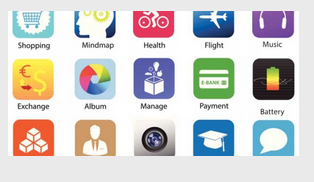 Damian Blackden provides further insight into the latest ad blocking developments as part of the Change Briefing series.
Damian Blackden provides further insight into the latest ad blocking developments as part of the Change Briefing series.
What’s Changed?
All in this industry take ad blocking and its implications seriously. And although many readers may be fatigued by its continual presence in the headlines there are good reasons for its high profile, as significant developments continue to surface.
To date most consumer installed ad blockers have focused on improving the user experience, arguing that if they’re implemented they will increase browsing speed and reduce telco data charges.
However in reality, and even when using VPNs, they have only been able to block ads when deployed in-browser. This has meant that in-app ads (which represent the vast majority of mobile ad consumption time) and native ads have been relatively untouched.
Now, a new breed of ad blocker has launched in the US App Store called Been Choice. It claims to be able to block all kinds of ads: in-app and in-browser, and native promoted content, as well as display and video.
Whilst the app explains that it offers its users increased privacy, it also offers users a very different alternative – a reward scheme for the app to be allowed to collect data for a minimum of 30 days in return for payment of $20 per month.
Been Choice is therefore targeting two very different types of user:
1.Those who use current ad blockers to increase their privacy, but who’d like something that’s further reaching.
2.Those who are happy to let a third party collect and share their data with others. Who the others are is currently unclear.
Our experience has been that many ad blockers do not work as well as they claim. Limited testing of Been Choice on iPhones has so far revealed:
Many in-app ads are blocked eg in WSJ, but by no means all in all apps.
Ads in Apple News are blocked. This is significant as there has been previous speculation that Apple has allowed blockers as they reduce competition to its own iAds.
Some apps are badly disrupted eg Facebook. It’s not known whether Facebook is turning off access to its content on devices that use Been Choice, but it seems unlikely that they could move so quickly.
Other sites load without ads but the content isn’t accessible beyond the initial headlines.
Twitter, You Tube and LinkedIn ads for example don’t seem to be affected, whilst some sites do load faster than usual.
The above means that Been Choice is probably disrupting the user experience rather than enhancing it, despite some of the latency reductions.
It would therefore appear that the Been Choice blocker isn’t bullet proof vs what it claims to be able to deliver to the user. However it’s early days and this is version v1.10.
What The Change Means
Advertisers only pay for ads that are served. They are not billed for blocked ad space. This means that blocking is an immediate problem for publishers.
It’s a definite issue for advertisers and agencies if it affects their ability to reach valuable audiences at scale, cost efficiently. Any technology that materially affects inventory supply will affect the market price, so in reality this is very much an industry challenge.
Given the intense pressure ad blockers are placing on publishers, and how pervasive Been Choice’s capabilities could become, this may well be the trigger for publishers to install their own technology that cuts access to their content if the user is implementing an ad blocker, and then only providing access to their sites if a person pays, or disables their blocker.
Blocking ads in-app is a dangerous game as it encroaches on Apple’s (currently relatively minor) ad revenue business. That coupled with the disruptive effects of Been Choice’s technology on the user experience may see it kicked out of the App Store or forced to adjust its capabilities.
Implications Of The Change For Advertisers
Much will depend on the consumer response. The poor experience may put many off in reality. And even if Been Choice fixes its delivery there may only be a limited number of users who are prepared to give their data away in return for rewards. Certainly many ‘pay to browse’ products failed 15 years ago. However we don’t know how this development will play out yet.
What we do know is that for every action there is usually a reaction. If Been Choice, and those that will no doubt follow it, can make the technology work well we could see publishers implement anti-blocking, subscription or micro payment approaches.
Meanwhile these developments will accelerate innovation regarding the invention of new mobile marketing techniques, many of which will be more creative than the current crop.
There could also be a requirement to proactively move advertising budgets to apps and platforms that can continue to provide targeted audiences at scale. This would undoubtedly affect the shape of some media schedules but it’s too early to examine relative value as there is still significant supply online in most instances.
In the meantime we continue to suggest the five good practice actions recently outlined by Jonathan Adams.
However we take these developments very seriously, and are mindful that there are already 200m users who use ad blocking technology globally, and will act as required to ensure that our clients’ marcomms programs reach and influence consumers in order to deliver the appropriate ROI.
Written by Damian Blackden Chief Strategy Office at Maxus Global
Source: Maxus Global


